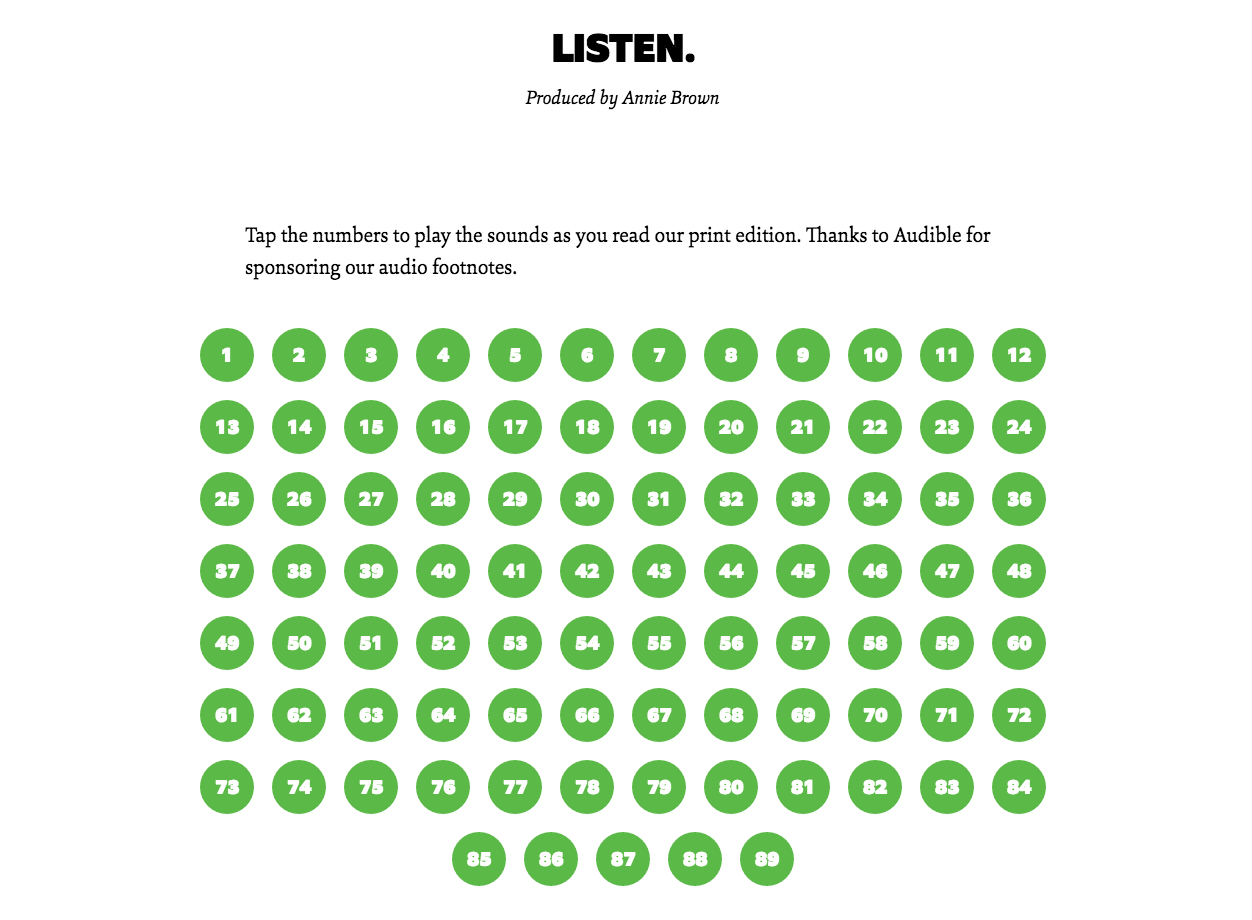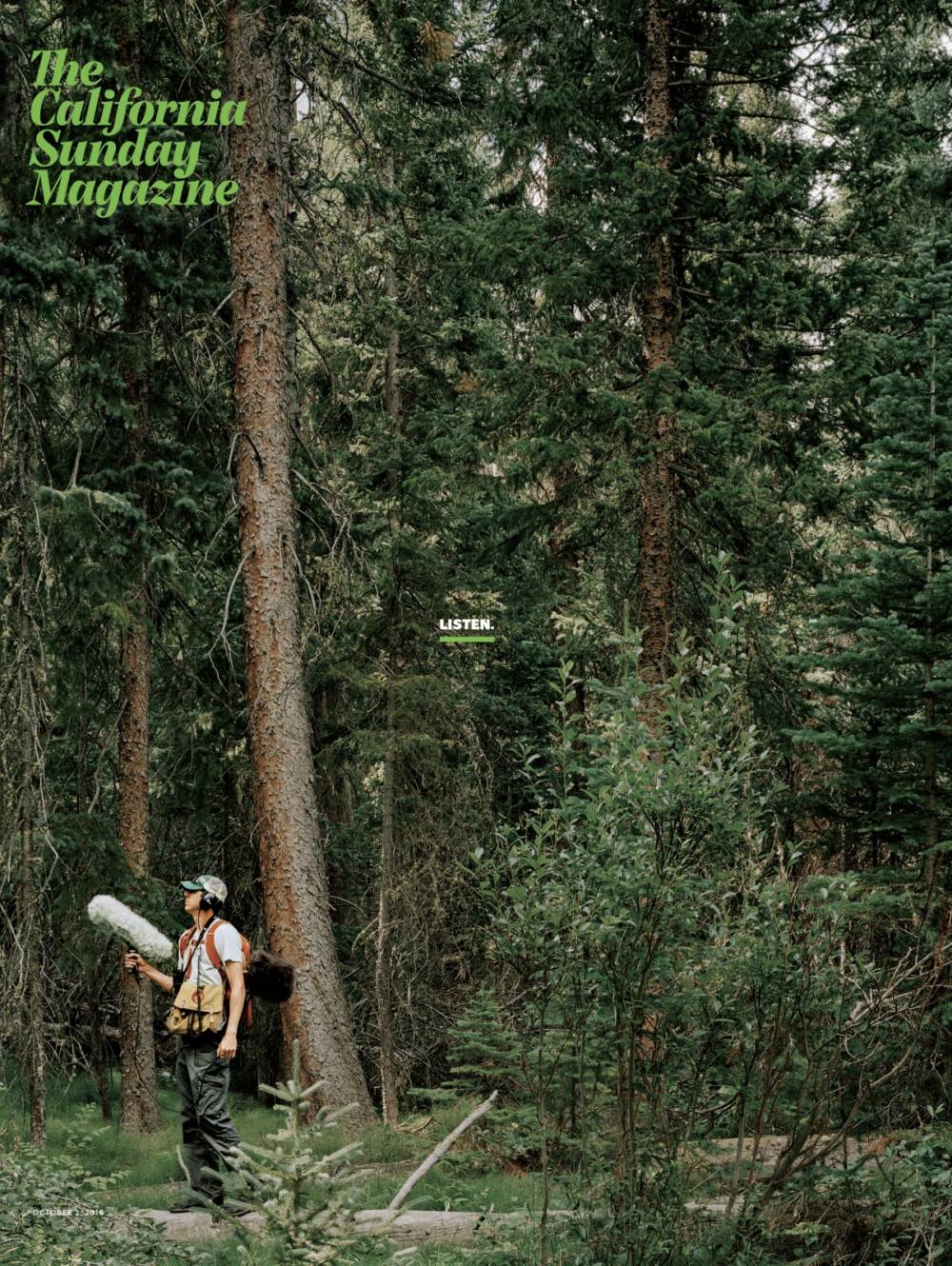For a recent issue of The California Sunday Magazine, editors decided to try something new and devote the whole magazine to one topic — sound.
The issue features the sounds of forests, the ocean, things being made and musicians, moving from quiet to loud. But how do you make a print issue about sound audible? The solution was actually pretty simple.
“Sound is fascinating, and it’s a way into so many different kinds of stories,” the intro in the Oct. 2 edition reads. “But we worried that a print issue dedicated to sound might be a bit … quiet? So, throughout the issue, you’ll see audio footnotes so you can play the sounds you’re reading about.”
The California Sunday Magazine launched two years ago out of a live event. That event, Pop-Up Magazine, brings together writers, photographers, musicians and radio producers live on stage.
In the magazine, which gets delivered with the Sunday editions of the Los Angeles Times and the San Francisco Chronicle as well as to subscribers, “we produce ambitious reported features and beautiful photography from across California, the West, Asia, and Latin America for a national audience,” said Editor-in-Chief Doug McGray.
McGray spoke with Poynter via email about the issue and what they learned along the way.
How did you decide to devote an issue to sound?
We were talking about doing some sort of special issue in conjunction with a live Pop-Up Magazine show. Around the same time, at Pop-Up Magazine, we’d been talking about collaborating on a live show with our friends at Noise Pop; they produce big music festivals in the Bay Area. We kicked around a bunch of ideas, and got really excited about sound.
It’s a surprising way into so many different kinds of stories. Also a great theme for a live magazine performance. So we produced a Sound issue of California Sunday. And we also produced a live Pop-Up Magazine show in collaboration with Noise Pop at Berkeley’s iconic, outdoor Greek Theatre, dedicated to the sounds of California — everything from music to social issues, pop culture, and the natural environment. We released the print edition of the magazine at the show, which a few thousand people attended.
This is a really cool idea for the web and one with some specific limitations for print. How did you address those restraints?
So many interesting ideas come from limitations! We thought a print magazine dedicated to sound might be a little quiet. So we had this idea to create sonic footnotes. There are almost 100 of them scattered throughout the print edition. You can tap and play the footnotes on your phone at californiasunday.com/sound and listen to these little sonic moments as you’re reading in print. It’s a really fun, novel reading experience.

Screen shot, The California Sunday Magazine
What about with the digital presentation? Tell us about that?
Obviously sound is more straightforward online. We embedded playable sonic footnotes in the text, so you can read and listen. And as always, we featured lots of big, beautiful photography and illustration. That’s a big part of everything we do, online, live, or in print.
What did you learn after devoting one whole issue to a single topic?
It was fun — and hard work. We’re a new magazine with big ambitions and a small staff. With this issue we had to imagine a lot from scratch. We created a new editorial architecture. Lots of smaller features instead of a few big ones. And we organized the stories in the issue from quiet to loud, in three acts, each with its own table of contents. Our creative director Leo Jung did an amazing job. The issue was a great reminder to keep challenging ourselves, trying new things, experimenting with new formats — like a print edition you can hear!

California Sunday’s issue on sound. (Image courtesy California Sunday)







